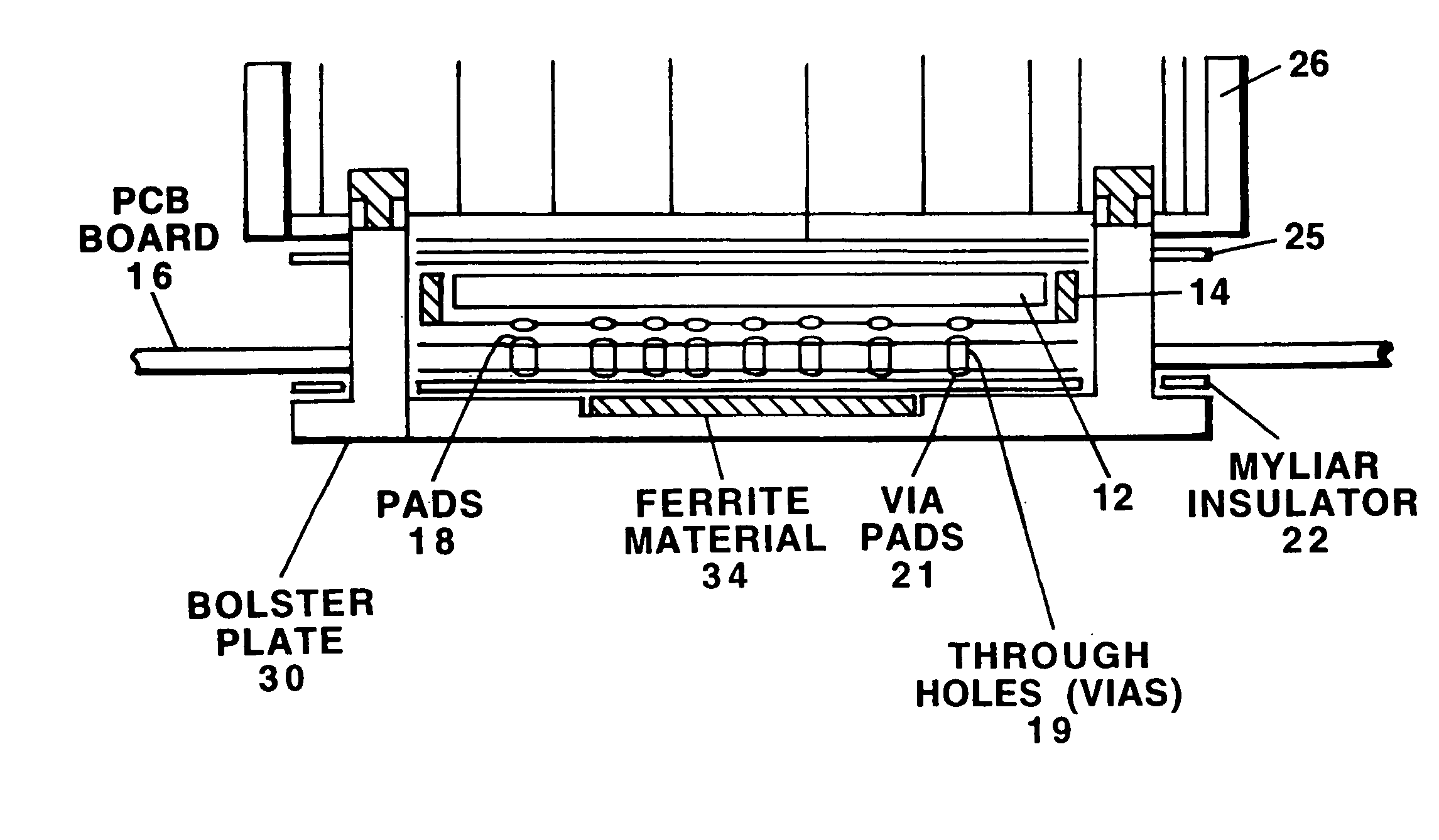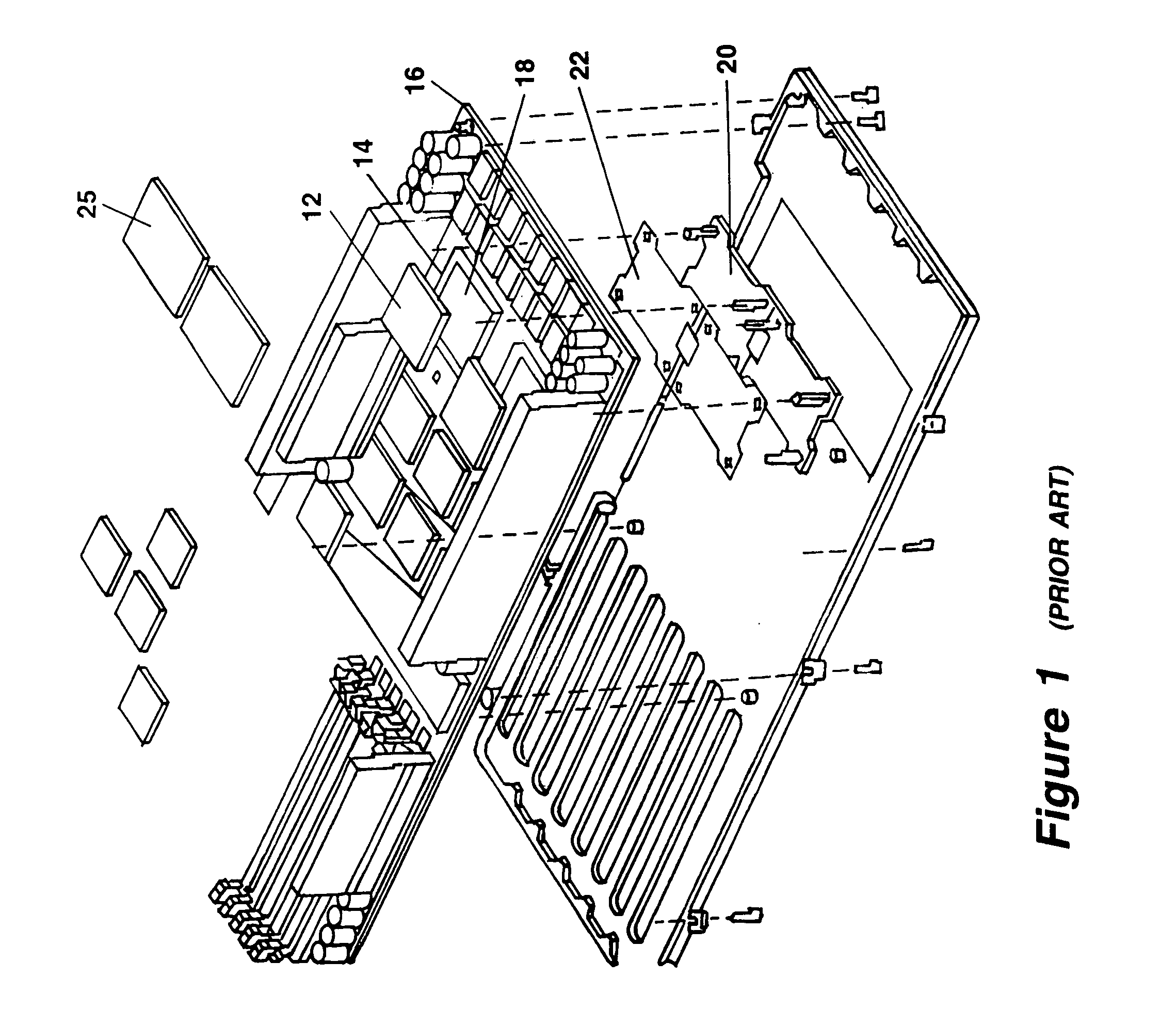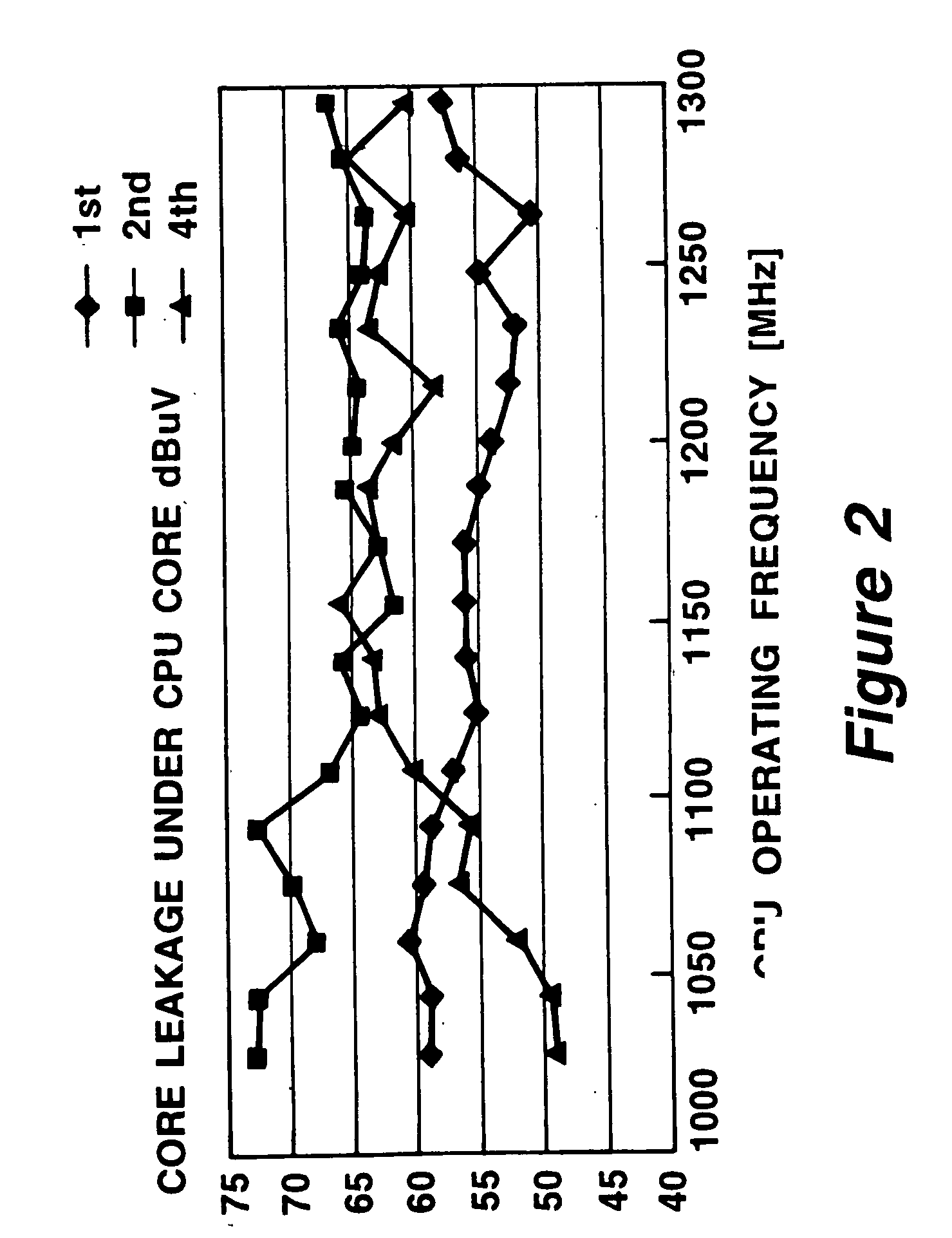Method and apparatus for reducing capacitively coupled radio frequency energy between a semiconductor device and an adjacent metal structure
a capacitively coupled radio frequency energy and semiconductor technology, applied in cross-talk/noise/interference reduction, electrical apparatus construction details, printed circuit aspects, etc., can solve the problems of difficult to avoid metal structures close to semiconductor devices, electromagnetic interference, etc., to reduce the radiated emission, increase the distance between the source and the source, and maximize the absorption of radio frequency energy
- Summary
- Abstract
- Description
- Claims
- Application Information
AI Technical Summary
Benefits of technology
Problems solved by technology
Method used
Image
Examples
Embodiment Construction
[0023]References in the specification to “one embodiment” or “an embodiment” means that a particular feature, structure, or characteristic described in connection with the embodiment is included in at least one embodiment of the invention. The appearances of the phrase “in one embodiment” in various places in the specification are not necessarily all referring to the same embodiment.
[0024]FIG. 1 is an exploded view of a prior art central processing unit (CPU) module assembly, such as the Ultrasparc III™ processor modules, commercially available from Sun Microsystems, Santa Clara, Calif., illustrating the relationship between semiconductor device(s) and the printed circuit board. As illustrated, the CPU processor 12 is surrounded by a socket 14 and is sits on top of pads 18 formed in the upper surface of PCB board 16. A bolster plate 20 is inserted from the underside of PCB board 16, through holes in Mylar sheet 22 and through holes PCB board 16. Mylar sheet 22 electrically isolates ...
PUM
 Login to View More
Login to View More Abstract
Description
Claims
Application Information
 Login to View More
Login to View More - R&D
- Intellectual Property
- Life Sciences
- Materials
- Tech Scout
- Unparalleled Data Quality
- Higher Quality Content
- 60% Fewer Hallucinations
Browse by: Latest US Patents, China's latest patents, Technical Efficacy Thesaurus, Application Domain, Technology Topic, Popular Technical Reports.
© 2025 PatSnap. All rights reserved.Legal|Privacy policy|Modern Slavery Act Transparency Statement|Sitemap|About US| Contact US: help@patsnap.com



